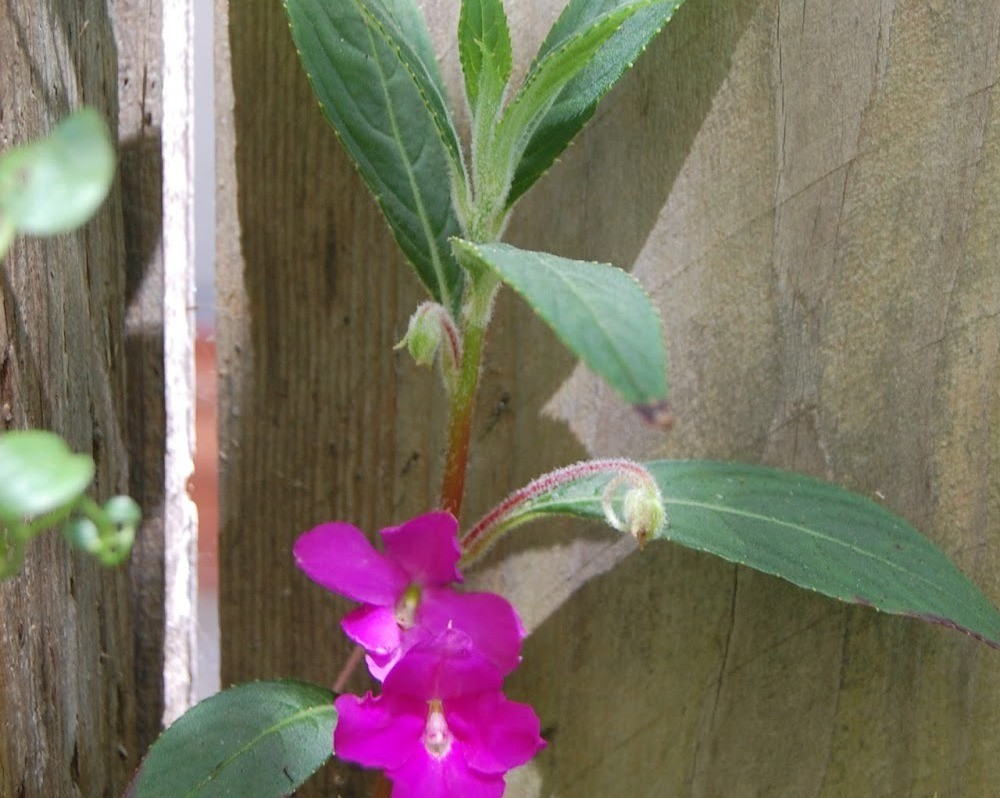Impatiens irvingii
(Impatiens irvingii)

Description
Impatiens irvingii is a species of flowering plant in the family Balsaminaceae. It is native to tropical Africa. This is a variable plant. In general, it is a perennial herb with stems up to 1.5 meters long, or occasionally longer. They are rarely erect, more often prostrate or somewhat upright. The stems are succulent with swollen nodes, often red in color or green tinged with red, and sometimes hairy or velvety. The spirally arranged leaves have generally lance-shaped, toothed blades up to 16 centimeters long. They are dark green and waxy on the upper surfaces and silvery green on the undersides. They are sometimes hairy. Light purple flowers grow in the leaf axils. They have hairy bracts and sepals. The back sepal tapers into a long spur. The petals are up to 3 centimeters long. The fruit capsule is up to 1.8 centimeters long. The natural habitat types of the plant include moist and wet areas such as moist forests and swamps. It is a host plant for the downy mildew fungus Pseudoperonospora cubensis, which causes red spots on the leaves and, in severe cases, necrosis. Impatiens is a genus of more than 1,000 species of flowering plants, widely distributed throughout the Northern Hemisphere and the tropics. Together with the genus Hydrocera (one species), Impatiens make up the family Balsaminaceae. Common names in North America include impatiens, jewelweed, touch-me-not, snapweed and patience. As a rule-of-thumb, "jewelweed" is used exclusively for Nearctic species, and balsam is usually applied to tropical species. In the British Isles by far the most common names are impatiens and busy lizzie, especially for the many varieties, hybrids and cultivars involving Impatiens walleriana. "Busy lizzie" is also found in the American literature. The invasive alien Impatiens glandulifera is commonly called policeman's helmet in the UK. Most Impatiens species are herbaceous annuals or perennials with succulent stems. Only a few woody species exist. Plant size varies dependent of the species from five centimetres to 2.5 meters. Stems are often rooting when becoming in contact with the soil. The leaves are entire, often dentate or sinuate with extra floral nectaries. Depending on species, leaves can be thin to succulent. Particularly on the underside of the leaves, tiny air bubbles are trapped over and under the leaf surface, giving them a silvery sheen that becomes pronounced when they are held under water.
Taxonomic tree:







